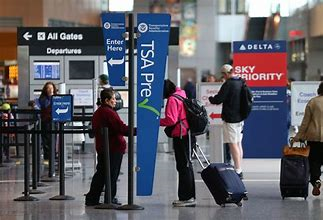TSA secret watchlist proves screening process needs overhauling
Despite the Transportation Security Administration’s efforts to improve the entry/exit experience for domestic and international travelers, there remains the perception that passage through United States airport can be a difficult and intrusive experience. This can deter some potential travelers to use alternative transportation.
As mentioned in the International Trade Administration’s study “2015 Top Markets Report: Travel and Tourism,” the report suggests that the United States’ market share has decreased despite an uptick in global travel.
Could this be the result of TSA screening practices?
Security screening techniques tend to feel like blunt instruments at best and profiling at worst. The latest story about TSA procedures backs up this notion. Earlier this month, the New York Times published an article about the TSA’s “secret watch list,” reportedly designed to identify potentially belligerent traveler and airport loiterers.
Travel screening standards range from invasive selective searches to agents readily waving the passengers through. Potential long-haul travelers, who typically spend more money on airline tickets, don’t appreciate feeling like they are being screened based on their gender, nationality or ethnicity.
Based on current facial recognition technology, Physiognomics is rooted in geometry, not pre-conceived biases. Using this approach creates a more scalpel-like, security-screening tool. This can minimize traditional stranger unconscious biases.
The Physiognomics platform can be utilized to flag travelers for further conversation, based on trustworthiness algorithms. This approach increases the efficiency of airport security and entry/exit screening. The scientific data collected could be used to help improve airport efficiency, brand reputation, and customer satisfaction.
The techniques of Physiognomics a ground breaking technological advancement that is well-positioned to be automated and scaled. TSA screeners and those who manage the process would use a more cognitive approach, instead of an emotional one, to assess travelers.
From TSA read the special needs of mentally or physically challenged passengers who are protected by the Americans with Disabilities Act, to decoding nonverbal clues the faces and bodies of passengers communicate, Physiognomics can be used to de-escalate situations and better understand travelers.
When we know better we do better.
Visit www.readthebody.com to learn more about the history of Physiognomics or contact us to work with your organization.

